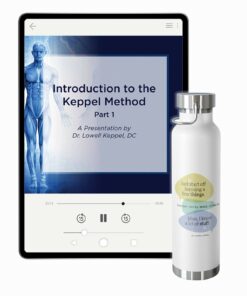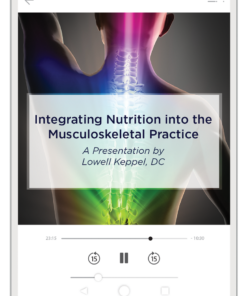Enjoy the latest installment of Dr. Lowell Keppel’s “Good to Know” series for practitioners.
How do I know if a patient needs Standard Process whole food supplements? And how do I know which ones?
This can be a constant dilemma for any practitioner. However, we have at our disposal multiple tests and observations to help determine the correct supplement.
Those of you who have attended my seminars in the past will recall that I am a firm believer in Muscle Testing and Leg Length Evaluation. These are fine ways to determine if there are any nutritional deficiencies, subluxations, toxins, or emotional “stuckness.”
I want to also encourage Objective Testing, or what Dr. Walter Schmitt calls indicator testing. This method is incredibility simple and effective—not to mention powerful for the patient. So how do we do it?
Start with the patient’s complaint. For example, if the complaint is musculoskeletal, you can try any of the following.
Range of motion test:
- Is there limited ROM (range of motion)?
- Is there pain on ROM (on a scale of zero to 10, with 10 being the most extreme)?
- Now have the patient chew the supplement but do not swallow. Wait 1–2 minutes, then repeat the test.
- Did the ROM improve? Was there less pain? If not, try another supplement.
If you get the WOW factor—that look on the patient’s face like they can’t believe it—the patient has the product they need. For example, I had a patient who had low back pain with the pain scale at 9. I had him chew 2 Chlorophyll Complex, and in less than two minutes he stated his pain decreased to a 3 and his ROM improved. Needless to say, the patient wanted the product.
Palpatory Testing for Pain:
- Have the patient chew the desired product and re-palpate for decreased pain. (For example, when the large intestines are inflamed, it will be painful when the patient is palpated.)
- Get a number from zero to 10 on the pain scale, then have patient chew the desired supplement. Re-palpate.
- If decreased tenderness occurs, you have at least one of the proper supplements.
Important to note: The patient MUST report a noticeable change! If they respond that they think it might be better, this means the supplement did not give the desired results. And that is great information.
Start doing the Objective Testing and Palpatory Testing, and you will find results will start to improve—as will your patient’s compliance.
As always, RESULTS REFER!
Image from iStock/LSOphoto.





